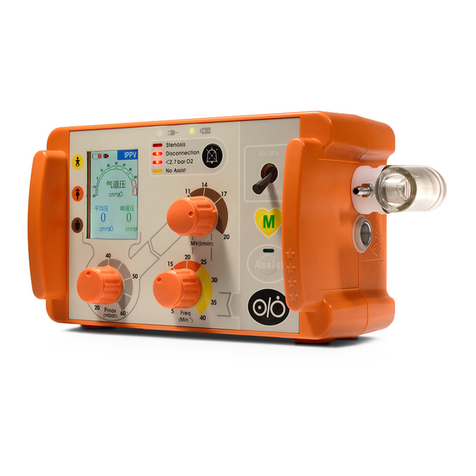
H-1.601. 00137-B3.0
I
Contents
Contents............................................................................................................................................. I
1 Equipment Description ...............................................................................................................1
1.1 Warning、Attention and tips ........................................................................................1
1.2 Overview.......................................................................................................................1
1.3 Safe Use of Oxygen ......................................................................................................3
1.4 Ventilation/Operation....................................................................................................4
1.5 Patient Respiratory Hose Assembly..............................................................................4
1.6 Software........................................................................................................................4
1.7 Accessories/Spare Parts ................................................................................................5
1.8 Battery...........................................................................................................................5
1.9 Symbols that..................................................................................................................6
2 Equipment Description...............................................................................................................7
2.1 Purpose..........................................................................................................................7
2.2 Contraindications:.........................................................................................................7
2.3 Scope of Application.....................................................................................................7
2.4 User Qualification.........................................................................................................8
2.5 The main composition of ..............................................................................................8
2.6 Main Unit......................................................................................................................8
2.7 Patient Respiratory Hose and Accessories....................................................................9
2.8 T5 Main Unit instruction...............................................................................................9
3 Interface description..................................................................................................................14
3.1 Composition of main interface....................................................................................14
3.2 Main menu instruction................................................................................................15
3.3 Alarm Message ...........................................................................................................20
3.4 Review Events ............................................................................................................25
3.5 Setting of Alarm Limits...............................................................................................26
3.6 Ventilation mode Parameter linkage relationship: ......................................................27
4 Installation....................................................................................................................................29
4.1 Overview.....................................................................................................................29
4.2 Boxed object ...............................................................................................................29
4.3 Install the battery.........................................................................................................29
4.4 Connection of Oxygen Cylinder .................................................................................30
4.5 Removal of Empty Cylinder .......................................................................................30
4.6 Connection of New Cylinder ......................................................................................30
4.7 Patient Respiratory Hose Assembly and Its Connection........................................30
4.8 Patient Breathing Valve...............................................................................................32
5 Ventilation Operation................................................................................................................34
5.1 Calibration of Touch Screen........................................................................................34
5.2 Startup-Self-Checking.................................................................................................35
5.3 Select Ventilation Mode..............................................................................................36
5.4 Main Ventilation Parameters Setting...........................................................................37
5.5 Details on Ventilation Modes......................................................................................38
5.6 Execution of Ventilation..............................................................................................43
5.7 Monitoring of Respiration...........................................................................................45
5.8 CPR Ventilation...........................................................................................................46
5.9 End Ventilation............................................................................................................48
5.10 Calculation of Storage Capacity/Operation.................................................................49
5.11 Alternative Breathing Apparatus.................................................................................50
5.12 Battery Management...................................................................................................50
6 Sanitization...................................................................................................................................52
6.1 T5 Main Unit...............................................................................................................52




























